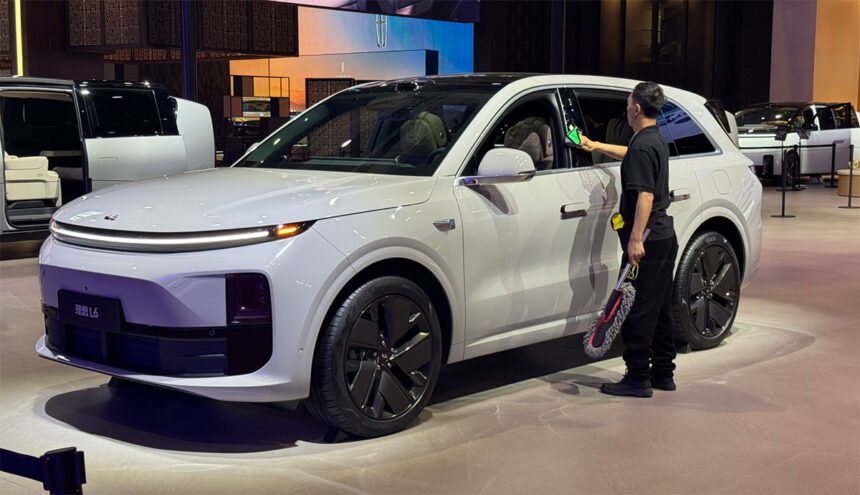Li Auto Lowers 2025 Sales Target Due to Weak Order Intake After Updated Li L6 Launch
Li Auto (NASDAQ: LI) has reportedly adjusted its 2025 vehicle sales target, citing weaker-than-expected orders for the updated Li L6 model. The Chinese new energy vehicle (NEV) manufacturer has internally revised its production target to 640,000 units for this year, according to a recent report by local media outlet 21jingji.
The company now aims to produce 520,000 units of its extended-range electric vehicle (EREV) models and 120,000 units of its battery electric vehicle (BEV) models. This shift in production targets indicates a 8.57 percent reduction from Li Auto’s initial target of 700,000 units.
Li Auto typically bases its production plans on sales volume, leading to the adjustment in its 2025 sales target. The company previously set a goal of 700,000 vehicle sales for the year, including at least 560,000 EREV models and 50,000 units of the all-electric i-series. With the latest changes, there is now a decreased target for EREVs and an increased target for BEVs.
The decision to lower the production targets was influenced by the fact that orders for the updated Li L6 did not surpass expectations following its launch. The Li Mega MPV and SUV models, including the Li L9, Li L8, Li L7, and Li L6, make up Li Auto’s current model lineup. While the Li Mega is the company’s sole BEV offering, the L-series models are all EREVs.
In a bid to achieve full-year profitability in 2025, Li Auto plans to implement moderate cost controls. This involves adjusting the budget under the new production target compared to the previous cost estimates. The company’s recent performance saw it deliver 33,939 vehicles in April, with the Li L6 emerging as the top-selling model by delivering 16,755 units.
The Li L7 followed closely behind, delivering 8,102 vehicles in April, while the Li L8 and Li L9 contributed 5,178 and 3,801 vehicles respectively. Looking ahead, Li Auto is set to launch the Li i8, its first all-electric SUV, in July, followed by the Li i6 later in the year. The company’s commitment to adapting its production targets and cost controls reflects its strategic approach to navigating market dynamics and ensuring sustainable growth in the competitive NEV sector.







